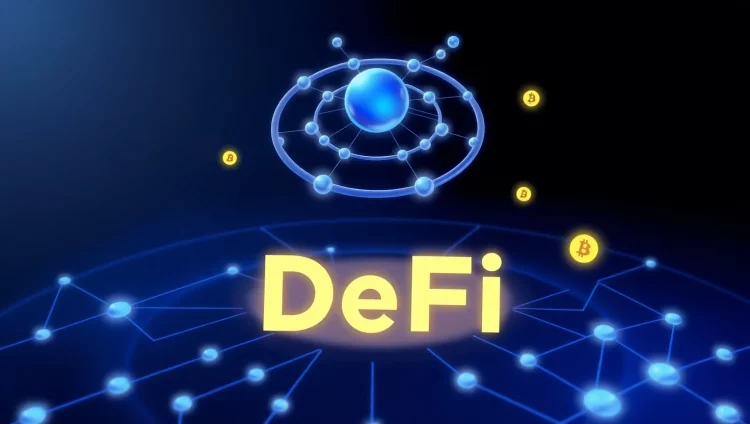Introduction
Decentralized Finance (DeFi) is rapidly transforming the financial industry by offering innovative financial products and services without the need for traditional intermediaries such as banks or brokers. Built on blockchain technology, DeFi platforms utilize smart contracts to enable peer-to-peer financial transactions, including lending, borrowing, trading, and even insurance. Since its inception, DeFi has gained significant traction, with billions of dollars locked in DeFi protocols and numerous projects offering a wide range of services.
However, the rise of DeFi platforms has also posed significant challenges for regulators. Traditional financial systems operate within well-defined legal and regulatory frameworks, which are difficult to apply to decentralized ecosystems that lack central authority or clear jurisdiction. Issues such as consumer protection, anti-money laundering (AML), know-your-customer (KYC) compliance, and market manipulation are now at the forefront of regulatory debates.
This article explores the challenges that DeFi platforms pose to regulatory bodies, the steps that regulators are taking to address these challenges, and the potential future of DeFi regulation.
1. Understanding DeFi: A New Era of Finance
DeFi refers to a set of financial services that are built on blockchain technology and operate without centralized intermediaries. These platforms enable users to access financial products such as loans, insurance, savings, and exchanges directly from their wallets, with the help of smart contracts. The underlying technology makes DeFi transparent, borderless, and available to anyone with an internet connection.
Key features of DeFi platforms include:
- Decentralization: Unlike traditional finance, DeFi platforms operate on decentralized networks, typically using Ethereum, Binance Smart Chain, or Polkadot, among others.
- Smart Contracts: Smart contracts are self-executing contracts where the terms are written into code, removing the need for intermediaries.
- Decentralized Governance: Many DeFi platforms utilize governance tokens that allow users to vote on decisions affecting the platform, including upgrades, funding, and protocol changes.
- Liquidity Pools: DeFi platforms rely heavily on liquidity pools, where users provide capital in exchange for returns, often in the form of yield farming or staking.
The Growth of DeFi
The DeFi market has exploded in recent years. In 2020, the total value locked (TVL) in DeFi platforms surged from around $1 billion to over $85 billion by the end of the year. By 2021, the TVL exceeded $200 billion, with numerous platforms offering a wide range of services, such as decentralized exchanges (DEXs), lending and borrowing protocols, and synthetic assets.
As of today, platforms like Uniswap, Aave, Compound, MakerDAO, and SushiSwap are among the top players in the space. Despite the rapid growth, DeFi remains largely unregulated, which presents significant challenges for both users and regulators.
2. The Regulatory Challenges of DeFi
2.1 Lack of Centralized Authority
One of the defining characteristics of DeFi is its decentralization. Unlike traditional financial institutions that have a clear regulatory body overseeing their operations, DeFi platforms are decentralized, with governance distributed among token holders and participants. This lack of central authority presents a challenge for regulators who are accustomed to dealing with centralized entities that are easy to identify, monitor, and regulate.
For example, in the case of centralized exchanges (CEXs), such as Binance or Coinbase, regulators can easily identify the company behind the exchange, hold them accountable for compliance, and impose regulations. In contrast, DeFi protocols operate autonomously, often with no single entity responsible for managing the platform.
2.2 Legal Ambiguities and Jurisdictional Issues
Because DeFi operates across borders, regulatory bodies face significant challenges related to jurisdiction. In traditional finance, regulatory bodies have clear territorial boundaries, meaning they can regulate firms within their jurisdiction. However, DeFi platforms are often global in nature, allowing users to access services from anywhere in the world.
This creates legal ambiguity, as regulatory bodies struggle to apply existing financial laws to decentralized platforms that do not conform to traditional corporate structures. Additionally, the cross-border nature of DeFi means that users and developers can potentially circumvent local regulations, creating issues for regulators attempting to enforce national laws.
2.3 Anti-Money Laundering (AML) and Know Your Customer (KYC) Compliance
One of the most pressing regulatory challenges in the DeFi space is ensuring compliance with Anti-Money Laundering (AML) and Know Your Customer (KYC) regulations. In traditional finance, banks and financial institutions are required to conduct thorough checks on their customers to prevent money laundering, terrorist financing, and fraud.
However, DeFi platforms typically operate without requiring KYC information from users, which makes them attractive for individuals seeking anonymity. This creates a potential risk for illegal activities such as:
- Money Laundering: DeFi platforms can be used to move funds across borders without leaving a trace of the sender’s identity.
- Terrorist Financing: Criminal organizations can use DeFi protocols to fund illegal activities while maintaining anonymity.
- Fraud: The lack of KYC checks makes it easier for fraudulent actors to participate in DeFi platforms without being identified.
While some DeFi projects are attempting to address these concerns by integrating third-party KYC and AML solutions, the decentralized nature of the ecosystem makes universal enforcement difficult.
2.4 Consumer Protection
Another challenge for regulators is ensuring consumer protection in DeFi. While DeFi platforms offer high returns through mechanisms like yield farming or liquidity provision, these products can also be highly risky. For example, some DeFi protocols may be vulnerable to smart contract bugs, flash loan attacks, or rug pulls, where the developers exit the project after draining funds from liquidity pools.
Because DeFi platforms often operate outside the purview of traditional financial regulators, users may not have access to the same protections they would in the traditional financial system. In cases of fraud or loss of funds, users may have limited legal recourse. Regulators are thus faced with the dilemma of how to protect consumers without stifling innovation in a space that promises financial inclusion.
2.5 Market Manipulation and Price Volatility
The lack of regulation in DeFi platforms also increases the risk of market manipulation. In traditional financial markets, regulators like the U.S. Securities and Exchange Commission (SEC) and the Commodity Futures Trading Commission (CFTC) monitor for market abuses, such as insider trading, pump-and-dump schemes, and spoofing.
In DeFi, however, the use of autonomous market-making mechanisms, such as Automated Market Makers (AMMs) and liquidity pools, can create an environment where market manipulation is easier. Large stakeholders or “whales” can manipulate prices by making large trades that disproportionately affect the value of digital assets. Additionally, the use of flash loans (loans that are taken and repaid within a single transaction) allows actors to manipulate markets within a short timeframe.
Regulating these types of market activities in a decentralized environment is complex and requires new frameworks to address the unique characteristics of DeFi.

3. Regulatory Responses to DeFi Challenges
3.1 The SEC and CFTC in the U.S.
In the United States, the Securities and Exchange Commission (SEC) and the Commodity Futures Trading Commission (CFTC) have been the primary regulators seeking to apply existing financial laws to the DeFi space.
- Securities Laws: The SEC has been actively investigating DeFi platforms to determine whether tokens and assets offered on these platforms qualify as securities. Under the Howey Test, any asset that constitutes an investment contract may be classified as a security, subjecting it to rigorous regulatory oversight.
- CFTC’s Approach: The CFTC has focused on DeFi platforms that involve commodity trading and derivatives. Given that Bitcoin and Ethereum are classified as commodities, the CFTC is looking at how DeFi platforms that involve these assets should be regulated under U.S. law.
Both the SEC and the CFTC have also begun investigating decentralized exchanges (DEXs), which facilitate trading directly between users without a central authority. The challenge is determining whether these platforms are subject to existing exchange regulations.
3.2 The European Union’s MiCA Regulation
The European Union has been working on the Markets in Crypto-Assets (MiCA) regulation, which aims to create a regulatory framework for digital assets in the EU. While MiCA primarily focuses on centralized crypto services like exchanges, it also includes provisions that could impact DeFi platforms, particularly in areas related to consumer protection, transparency, and financial stability.
MiCA will likely include requirements for DeFi platforms to:
- Register with relevant authorities and disclose risks to consumers.
- Adhere to anti-money laundering (AML) and counter-terrorism financing (CTF) standards.
- Establish mechanisms for consumer protection and dispute resolution.
MiCA’s broad scope seeks to create a comprehensive framework that applies both to centralized and decentralized crypto services.
3.3 China’s Crackdown and Regulatory Clarity
China has taken a hardline stance on DeFi platforms, banning cryptocurrency trading and initial coin offerings (ICOs) while focusing on the development of its central bank digital currency (CBDC), the digital yuan (e-CNY). The Chinese government has prioritized financial stability and control over the decentralized nature of cryptocurrency and DeFi.
While China’s approach is more restrictive, it also reflects a growing desire by regulators to maintain control over financial systems, particularly in a country where digital payments are already widespread.
4. The Future of DeFi Regulation
The regulatory landscape for DeFi is still evolving. Regulators are working to find a balance between promoting innovation in the sector while addressing risks related to consumer protection, market manipulation, and money laundering. In the future, we can expect the following trends:
- Increased Collaboration with Industry: Regulatory bodies may work more closely with DeFi developers and industry leaders to understand the complexities of the ecosystem and create tailored regulations.
- Enhanced Transparency: DeFi platforms may be required to provide greater transparency regarding governance, tokenomics, and smart contract audits.
- Cross-Border Regulation: Since DeFi is inherently global, regulators will need to collaborate internationally to establish frameworks that are effective across jurisdictions.
As the DeFi ecosystem continues to mature, regulatory frameworks will likely evolve to create a safer environment for users while allowing innovation to thrive.
Conclusion
The rapid rise of DeFi platforms has revolutionized the financial landscape, offering innovative services that challenge traditional finance. However, the decentralized and borderless nature of these platforms presents significant challenges for regulators, who must address issues related to jurisdiction, consumer protection, AML/KYC compliance, market manipulation, and more.
As governments and regulators continue to refine their approaches to DeFi, it is essential that they strike a balance between encouraging innovation and protecting consumers. The future of DeFi regulation will likely be shaped by collaboration between regulators, developers, and industry participants, ensuring that the benefits of decentralized finance can be fully realized while minimizing potential risks.

















































